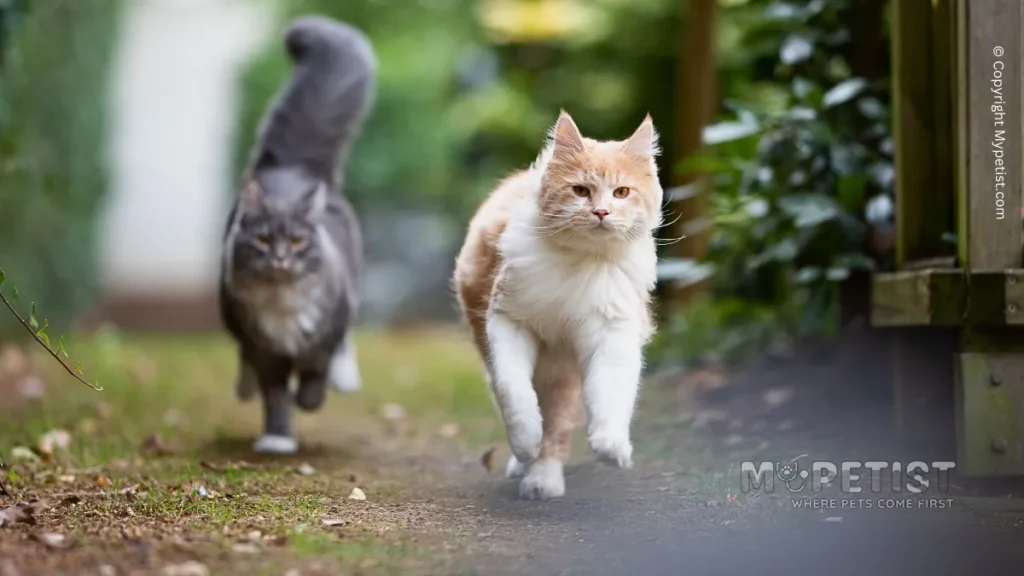How to Train a Cat to Come When Called
As a cat owner, it’s important to train your feline friend to come when you call them. It’s a skill that not only helps in creating a stronger bond between you and your kitty, but also serves as a safety measure as it enables you to find your cat easily. In this article, we will discuss some useful tips to train a cat to come when called and create a successful and positive training session.
Table of Contents
Why Should You Train A Cat to Come When Called?
Stronger Bonding

When you train your cat to come when called, it helps to create a stronger bond between you both. Your cat will associate you with positive reinforcement and will respond to your verbal cue.
Safety Purposes
It’s essential to train your cat to come when called in case of an emergency. If your cat ever gets loose or lost, you can easily call them back to safety, preventing any potential harm.
Easy to Find Your Cat
Training your cat to come when called makes it easier for you to track them down. Whether your cat is hiding under the bed, behind the closet doors or outside, by calling out for them, they will come running towards you.
How to Train A Cat to Come When Called
Training a cat to come when called may seem like an impossible task to many pet owners. After all, cats are known for their independent and aloof nature, unlike dogs who are more likely to come running at the sound of their name. However, contrary to popular belief, cats can indeed be trained to respond when called.
In this article, we will explore effective methods on how to train a cat to come when called. Whether you want your feline friend to come inside from a stroll in the garden or simply want them by your side during playtime, with patience and consistency, you can teach your cat this important behavior. So let’s dive into the world of cat training and learn how you can easily get your kitty’s attention on command!
#1. Choose a Cue Word
To train your cat, select a cue word that you’ll use each time you call your cat. You can use the cat’s name or “come” as the cue word. Be sure to use the same word every time you want your cat to come running towards you.
#2. Start Training Sessions
Start training your cat to come when called by practicing the cue word in a calm and quiet environment. Choose a neutral location without many distractions, such as toys or treats. Call your cat using the selected cue word and wait for them to come to you.
#3. Using Positive Reinforcement
Positive reinforcement is an essential aspect of cat training. When your cat comes to you, reward them with their favorite treat or cat food. It will encourage them to repeat the same behavior, helping to train them more efficiently.
Teaching Your Cat to Come on Command
Keeping Training Sessions Short
Cats have a short attention span, so it’s best to keep the training sessions short—five to ten minutes each day. Over time, your cat will gradually learn to come when called, making it a natural instinct.
Be Patient and Consistent
Training your cat to come when called requires patience and consistency. Cats learn at their own pace, so don’t rush and allow them to learn comfortably. Be consistent with your approach and reward their behavior consistently. Here are some tips to help you be patient and consistent in training your cat:
- Start training in a quiet and familiar location. Choose a room where your cat feels comfortable, and there aren’t many distractions.
- Use a specific command when calling your cat. Choose a word or sound that your cat can easily recognize and associate with coming to you. Use the same command consistently, so your cat knows what to expect.
- Use positive reinforcement. Reward your cat with treats, praise, or toys when they respond to your call. Positive reinforcement helps strengthen the bond between you and your cat and makes the training experience more enjoyable.
- Keep training sessions short and frequent. Cats have a shorter attention span than dogs, so training sessions should be kept brief but regular. Five to ten minutes per session is enough, and you can do multiple sessions per day.
- Be patient and calm. Cats are sensitive creatures, and they can easily pick up on your mood. Maintain a calm and positive attitude during training, and avoid getting frustrated or angry.
- Be persistent. Training takes time, and your cat may not always respond as quickly as you’d like. Continue practicing your command and rewarding your cat, and eventually, they’ll learn to come to you when called.
Remember that not all cats are the same, and some may take longer to train than others. Be patient and consistent, and your efforts will eventually pay off.
Keep the Treat Bag Handy
Rewarding your cat is vital when training, so keep the treat bag handy. Make sure to provide rewards immediately after your cat has come when you called them to reinforce good behavior.
Using Treats to Train Your Cat to Come When Called
Find Your Cat’s Favorite Treat
When training your cat, it’s important to use their favorite treat as a reward. It could be chicken, beef, or even a tasty treat from your local animal hospital. By using their preferred food, it encourages your cat to learn to come when called.
Using Tuna (optional)
If your feline companion happens to be highly driven by food, you can experiment with the irresistible allure of tuna as a delightful enticement to ensure their prompt response when beckoned. However, it is essential to exercise caution and exercise moderation in the quantity of tuna you offer, considering that an excessive intake might potentially lead to an upset stomach for your beloved cat.
Slowly Reduce Treat Usage
As soon as your cat learns to come when called, gradually start to reduce the number of treats you use as rewards in your training sessions. This will help your cat learn to come when called, knowing that they will not always get a treat.
So What to Do When Your Cat Already Comes When Called?
Practice More Complicated Behaviors
If your cat already comes when called, practice more complicated behaviors such as sitting, rolling over, or high-fiving. By building up their behaviors, you create a stronger bond with them.
Find New Ways to Reward Your Cat
Since your cat already knows how to come when called, find new ways to reward them. It could be a walk around the garden, extra cuddle time, or even new toys.
Don’t Stop Training and Engaging Your Cat
Training a cat to come when called is just one aspect of training your cat. Keep your cat engaged by providing them with toys and activities they can enjoy. It helps to build trust and creates a happy and healthy relationship between you and your feline friend. In conclusion, training a cat to come when called is an important skill for any cat owner.
By using positive reinforcement and patience, along with tasty treats and a consistent approach, you can teach your kitty to come running whenever you call their name. Remember to keep your training sessions short, be patient, and engage your cat regularly. With these tips, you’ll soon have an obedient feline who always comes when you call.
Recap
In conclusion, training your cat to come when called is not only possible but also a rewarding experience for both you and your feline companion. Remember to use positive reinforcement techniques, be patient and consistent in your efforts, and always reward good behavior.
With time and practice, your cat will learn to associate the sound of their name with positive things like treats and affection. So why not start today? Your cat will thank you for it, and you’ll enjoy the benefits of having a well-trained pet who listens to your commands. Start training your cat to come when called today!




